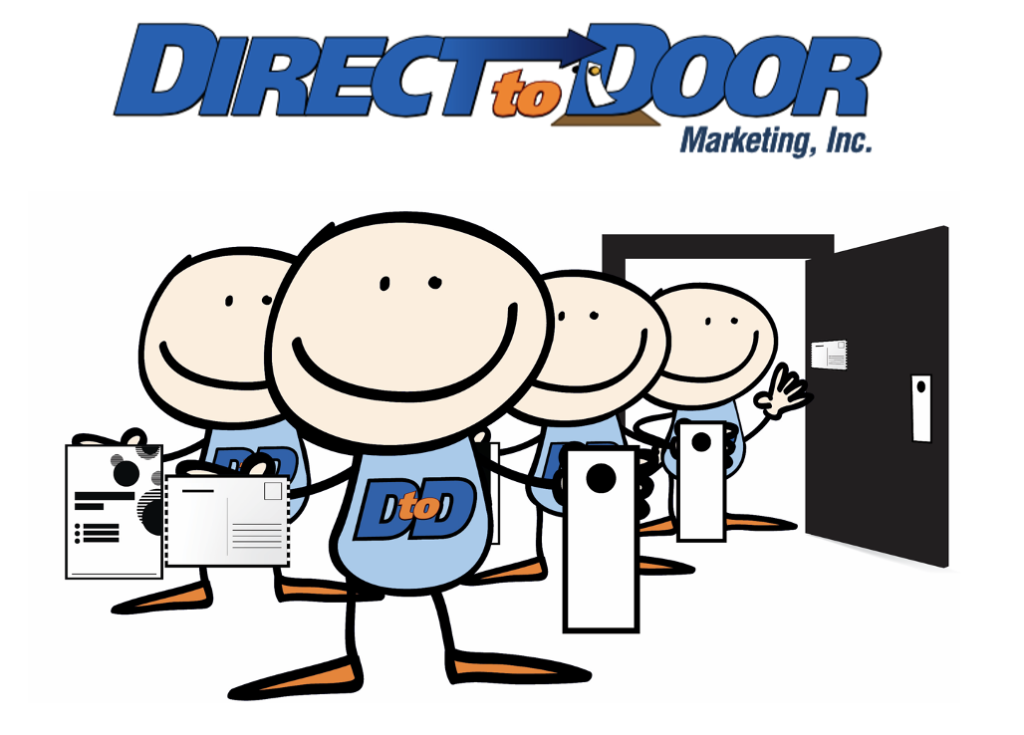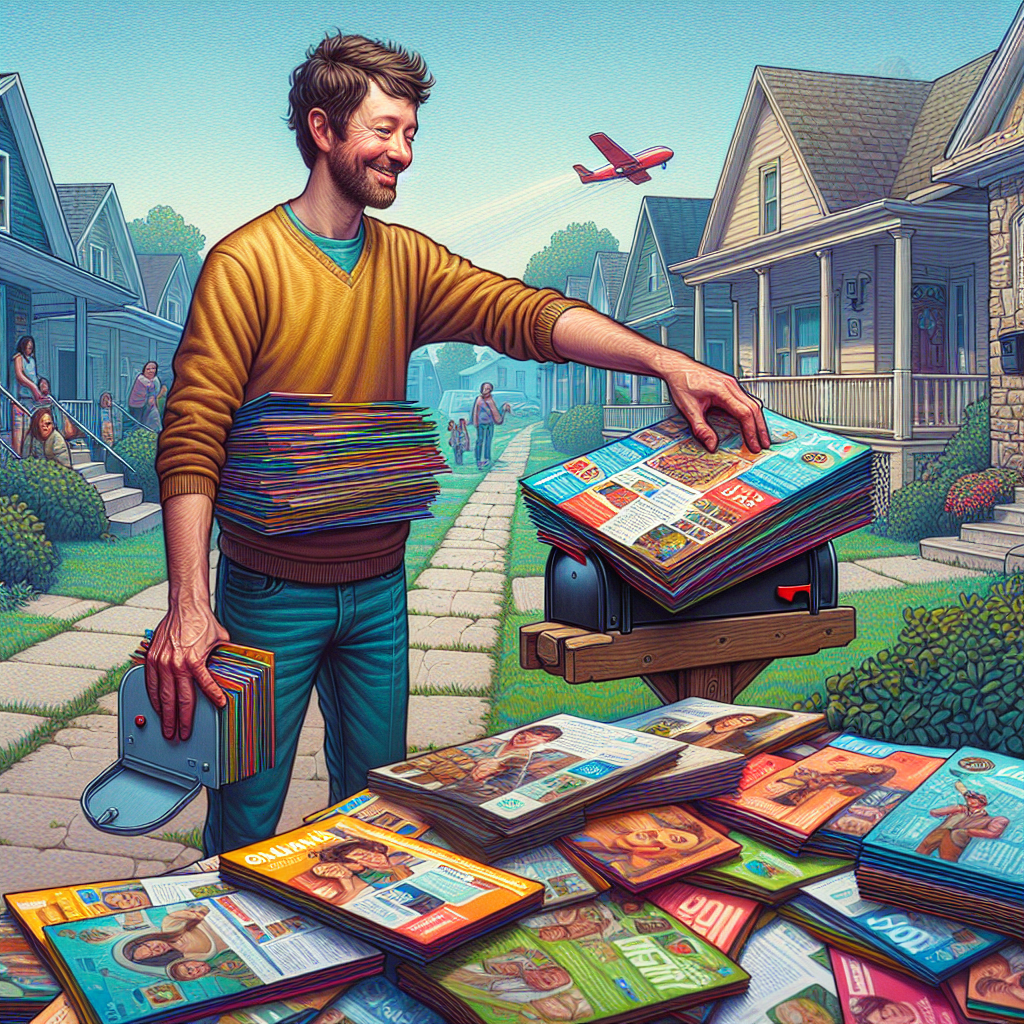
The Enduring Appeal of Tangible Marketing Materials
In an era dominated by digital advertising, the tactile nature of physical marketing materials like flyers continues to hold a unique appeal. Unlike digital ads that can be scrolled past or blocked entirely, a flyer is something tangible—something you can hold, feel, and even smell. This physical interaction creates a sensory experience that digital ads simply cannot replicate. Studies in consumer psychology have shown that people are more likely to remember and engage with marketing materials they can physically touch. The act of holding a flyer creates a sense of ownership, making the recipient more likely to read and retain the information.
Moreover, flyers offer a break from the constant barrage of digital notifications. In a world where consumers are inundated with pop-ups, emails, and social media ads, a well-designed flyer can stand out as a refreshing, non-intrusive form of communication. It’s a marketing medium that doesn’t demand immediate action, allowing the recipient to engage with it on their own terms. This sense of control can foster a more positive perception of the brand.
Flyers also tap into a sense of nostalgia. For many, receiving a flyer in the mail or at their doorstep evokes memories of simpler times, before the digital age took over. This emotional connection can make the marketing message more impactful, as it resonates on a deeper, more personal level. In 2025, this blend of sensory engagement and emotional resonance ensures that flyers remain a powerful tool in the marketer’s arsenal.
The Evolution of Door-to-Door Flyer Distribution
Door-to-door flyer distribution has come a long way from its humble beginnings. In 2025, this traditional marketing method has embraced modern innovations to stay relevant and effective. One of the most significant advancements is the use of data-driven targeting. Businesses now leverage demographic and geographic data to ensure their flyers reach the right audience. For example, a local gym might distribute flyers only to households within a 5-mile radius, targeting individuals who are most likely to become members.
Eco-friendly materials have also become a cornerstone of modern flyer distribution. With growing concerns about environmental sustainability, businesses are opting for recycled paper, biodegradable inks, and even seed-infused flyers that can be planted after use. These eco-conscious choices not only reduce the environmental impact but also enhance the brand’s image as a socially responsible entity.
The methods of distribution have also evolved. While traditional door-to-door delivery remains popular, some companies are experimenting with drone-based delivery systems to reach remote or hard-to-access areas. Additionally, digital tools like GPS tracking allow businesses to monitor the distribution process in real-time, ensuring that their flyers are delivered efficiently and accurately. These innovations have transformed flyer distribution into a sophisticated, data-driven marketing strategy that aligns with the needs and expectations of modern consumers.
Cost-Effectiveness: A Budget-Friendly Marketing Strategy
For small businesses and startups operating on tight budgets, flyer distribution offers an affordable yet highly effective marketing solution. Unlike digital advertising campaigns, which often require significant investment in ad placements, keyword bidding, and analytics tools, flyer distribution has relatively low upfront costs. Printing in bulk further reduces expenses, making it a cost-effective option for businesses of all sizes.
The return on investment (ROI) for flyer campaigns can be impressive, especially when targeted effectively. For instance, a local pizzeria might distribute 1,000 flyers in its neighborhood and see a 10% increase in orders within a week. This direct correlation between effort and results makes flyer distribution an attractive option for businesses looking to maximize their marketing dollars.
Additionally, flyers offer a level of permanence that digital ads lack. While an online ad disappears as soon as the campaign ends, a flyer can sit on a kitchen counter or bulletin board for weeks, serving as a constant reminder of the brand. This extended shelf life further enhances the cost-effectiveness of flyer distribution, making it a smart choice for businesses aiming to stretch their marketing budgets.
Reaching the Unreachable: Bridging the Digital Divide
In 2025, not everyone is online. Certain demographics, such as older adults, rural communities, and low-income households, remain less active in the digital space. Door-to-door flyer distribution provides a crucial bridge to these audiences, ensuring that businesses can reach potential customers who might otherwise be overlooked.
For example, a home repair service targeting older homeowners can use flyers to effectively communicate its offerings. These individuals may not be active on social media or search engines, but they are likely to read a flyer left at their doorstep. Similarly, in rural areas with limited internet connectivity, flyers serve as a reliable way to disseminate information.
Offline marketing also complements digital strategies by creating a multi-channel approach. A flyer can direct recipients to a website, social media page, or even a physical store, creating a seamless customer journey. This integration ensures that no audience is left behind, making flyer distribution an essential component of a comprehensive marketing strategy.
Personalization and Localization: The Key to Success
One of the greatest strengths of flyer distribution is its ability to be highly personalized and localized. Businesses can tailor their flyers to specific neighborhoods, demographics, or customer segments, increasing the likelihood of engagement. For instance, a daycare center might design flyers featuring images of children and testimonials from local parents, creating a sense of community and trust.
Hyper-localized campaigns have proven to be particularly effective. A real estate agent, for example, might distribute flyers showcasing recently sold homes in a specific neighborhood, along with a personalized message about the agent’s expertise in that area. This localized approach not only grabs attention but also builds credibility, as it demonstrates a deep understanding of the community.
Personalization extends to the design and messaging of the flyer. By using language, imagery, and offers that resonate with the target audience, businesses can create a more meaningful connection. In 2025, this level of customization is easier than ever, thanks to advancements in printing technology and data analytics.
The Role of Sustainability in Modern Flyer Distribution
Environmental concerns are no longer optional in marketing—they’re a necessity. In response to growing consumer demand for sustainable practices, businesses are adopting eco-friendly approaches to flyer distribution. Recycled paper, soy-based inks, and biodegradable materials are now standard options for environmentally conscious brands.
Recycling initiatives further enhance the sustainability of flyer campaigns. Some businesses include instructions on their flyers, encouraging recipients to recycle them after use. Others partner with local recycling programs to ensure that unused or discarded flyers are properly processed.
Aligning flyer campaigns with sustainability goals not only reduces environmental impact but also strengthens brand reputation. Consumers are more likely to support businesses that demonstrate a commitment to the planet, making eco-friendly flyer distribution a win-win for both the environment and the bottom line.
Integrating Flyers with Digital Marketing Strategies
In 2025, the line between offline and online marketing is increasingly blurred. Flyers now serve as a gateway to digital engagement, thanks to the integration of QR codes, personalized URLs, and social media handles. A flyer promoting a new restaurant, for example, might include a QR code that directs recipients to an online menu or reservation system.
This integration creates a seamless omnichannel experience, allowing businesses to track customer interactions across multiple platforms. By combining the tangible appeal of flyers with the convenience of digital tools, businesses can create a more engaging and effective marketing strategy.
Measuring the Impact of Flyer Campaigns in 2025
Gone are the days when the success of a flyer campaign was measured solely by guesswork. In 2025, businesses have access to a range of tools and techniques for tracking the impact of their campaigns. Unique promo codes, for instance, allow businesses to attribute sales directly to their flyers. Geotargeting tools can analyze the effectiveness of distribution in specific areas, providing valuable insights for future campaigns.
Industries Thriving with Door-to-Door Flyer Distribution
Certain industries continue to see exceptional results from flyer distribution. Real estate agents, for example, use flyers to showcase listings and build local credibility. Restaurants and cafes distribute menus and special offers, driving foot traffic and takeout orders. Local service providers, such as plumbers and landscapers, rely on flyers to reach homeowners in need of their expertise.
Common Misconceptions About Flyer Distribution
Despite its proven effectiveness, flyer distribution is often dismissed as outdated. However, this perception couldn’t be further from the truth. Studies show that physical marketing materials still achieve higher engagement rates than many digital ads. Flyers are not only read but often retained, making them a valuable tool for long-term brand awareness.
Tips for Designing High-Impact Flyers in 2025
Creating an effective flyer requires a blend of creativity and strategy. Use bold headlines to grab attention, and include a clear call-to-action to drive results. High-quality images and a clean layout ensure that your message is both visually appealing and easy to read. Personalization and localization further enhance the impact, making your flyer more relevant to its audience.
The Future of Door-to-Door Flyer Distribution
Looking ahead, the future of flyer distribution is filled with exciting possibilities. Augmented reality (AR) flyers could offer interactive experiences, while drone-based delivery systems could revolutionize distribution. As technology continues to evolve, so too will the ways in which businesses leverage this timeless marketing tool.


